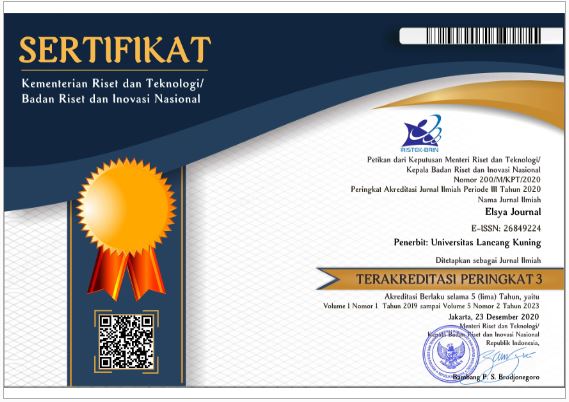Vowel Length Variation in the Pronunciation of Iraqi EFL Learners
Abstract
This study examined the realization of English vowel length by EFL Iraqi learners. The study was basically interested in identifying whether Iraqi EFL learners are able to realize variations in vowel length based on following sounds. To this end, 20 male and female participants with 20-37 years age range participated in a production test. Before, they did so, they were asked to respond to a demographic questionnaire that aimed to ensure that all informants selected are suitable for the study aims and they well represent the population of the study. The production test included 60 English real words that provided English pure vowels (monophthongs) in different settings. The production was done using high quality smart phones. The recordings were analyzed using PRAAT to measure vowel length. The results showed that though variations in vowel length do exist where these vowels are located in different settings, paired samples T.Tests revealed that these variations were not statistically significant. Moreover, numerical differences in vowel length based on gender variable were present in all vowels; however, results of independent samples T.Tests indicated significant differences in closed settings only. No significant differences among vowel length means in the open setting were identified. EFL learners need to be exposed to native speech and pay attention to phonetic details so as to improve their pronunciation in general and vowel length realization in particular.
Downloads
References
Abdulrahman, A., & Ramamoorthy, L. (2018). Vowel length/duration in geminated and non-geminated Arabic words. Language in India, 18(4), 24-31.
Abu-Haidar, F. (1989). Are Iraqi women more prestige conscious than men? Sex differentiation.
Ahmed, M. S., & Al-Heety, R. N. M. (2022). Lengthening of Short Vowels Incorrectly Under the Effect of Some Factors as a Problem Facing Students of the University of Anbar Concerned with Studying EFL. Journal of Almaarif University College, 33(1), 90-100. Akaba , S. (2008). An acoustic study of the Japanese short and long vowel distinction (Doctoral dissertation, University of Kansas).
Akbar, R., Taqi, H., & Al-Gharabally, N. (2020). The linguistic landscape on the streets of Kuwait: A challenge to the concept of diglossia. Studies in Linguistics and Literature, 4(4), 65-83.
Al Abdely, A. A. (2016). Perception and Production of English Vowels by Native Iraqi Arabic learners. Unpublished Ph.D thesis, Universiti Putra Malaysia, Serdang, Malaysia.
Al Abdely, A. A. (2021). The Pronunciation of English Low Vowels by Iraqi EFL Learners: An Intralingual Analysis. GEMA Online Journal of Language Studies, 21(3).
Al Abdely, A. A. W., & Thai, Y. N. (2016). Learning English Vowels by Iraqi EFL Learners: Perceived Difficulty versus Actual Performance. 3L: Southeast Asian Journal of English Language Studies, 22(1).
Al- Bazi, M. (2006). Iraqi dialect versus standard Arabic. California. USA.
Al Thalab, H. S. A., & Alwan, M. B. (2022). Production, Perception and Identification of English and Arabic Vowels and Semi-vowels by Iraqi Arabic EFL Learners. Journal of Tikrit University for Humanities, 29(1, 2), 49-67.
Alahmari, M. (2022). Shared vowels in English loanwords in Arabic: Variation in similarity-based adaptation. International Journal of Arabic-English Studies, 22(1), 203-220.
Al-Ani, S. H. (1970). Arabic phonology: An acoustical and physiological investigation. Paris: The Hague.
Al-Deen, J. N. (2018). Voicing-Dependent Vowel Duration Variation in Syrian EFL Learners’ Speech: An Acoustic Study.
Alhabshan, M., & Alsager, H. N. (2022). The Effect of Coda Voicing Contrast on Vowel Duration in American English and Najdi Arabic: A Comparison Study. Journal of Language Teaching and Research, 13(5), 1048-1057.
Alhazmi, K., Milton, J., & Johnston, S. (2019). Examining ‘vowel blindness’ among native Arabic speakers reading English words from the perspective of eye-tracking. System, 80, 235-245.
Alkalesi, Y. M. (2007). Modern Iraqi Arabic. Washington, D.C.
Almbark, R. (2012). The perception and production of SSBE vowels by Syrian Arabic learners: The foreign language model. (Unpublished doctoral dissertation). University of York, York, UK.
Al-Numair, L. S. (2021). The Vowels of Qassimi Dialect. International Journal of English Linguistics, 11(5).
Alqarni, H. (2018). The production of English vowels by native Arabic speakers (Doctoral dissertation, Colorado State University).
Al-Tamimi, Jalaleddin. (2007), ‘Static and dynamic cues in vowel production: A cross dialectal study in Jordanian and Moroccan Arabic’. Proceedings of the 16th International Congress of Phonetic Sciences (ICPhS), Saarbrücken, Germany (6-10 August 2007): 541-544.
Al-Zoubi, S. (2019). The speech sounds of Arabic language and their effect on learning English pronunciation: A contrastive analysis. International Journal of Humanities and Social Science, 9(1), 15-27.
Boersma, P. & Weenink, D. (2020). Praat, a system for doing phonetics by computer. .
Bohn, O. S., & Flege, J. E. (1992). The production of new and similar vowels by adult German learners of English. Studies in Second Language Acquisition, 14(02), 131-158.
Cahyaningrum, A. (2023). English Pronunciation by Korean EFL Learners on Hilokal Language Educational Application. Elsya: Journal of English Language Studies, 5(1).
Carter, R., & Nunan, D. (2001). The Cambridge Guide to Teaching English to Speakers of Other
Cruttenden, A. (2014). Gimson's pronunciation of English. Routledge.
Deacon, R. J. (2017). The causes of English spelling errors by Arabic learners of English. Eurasian Journal of Applied Linguistics, 3(2), 1-22.
Derwing, T. M., & Munro, M, J. (2005). Second language accent and pronunciation teaching: A research-based approach. TESOL Quarterly, 39, 379-397.
Dhayef, Q. A., & Al-Aassam, D. A. A. M. (2020). Orthography and Pronunciation Systems in English and Arabic: A Contrastive Study. Education and Linguistic Research, 6(1), 1-11.
Farran, B. M., van Heuven, V. J., & Hortobágyi, I. (2022). The Perception and production of American English sounds by Palestinian Arabic adolescents (Doctoral dissertation, Pannon Egyetem).
Flege, J. E., Bohn, O. S., & Jang, S. (1997). Effects of experience on non-native speakers' production and perception of English vowels. Journal of Phonetics, 25(4), 437-470.
Giegerich, H. J. (1992). English phonology: An introduction. Cambridge University Press.
Gilakjani, A. P. (2012). The significance of pronunciation in English language teaching. English Language Teaching, 5(4), 96.
Hamid, T. S., & Salih, S. S. (2022). The Perception of English Vowels by Kurdish EFL Learners. Journal of University of Human Development, 8(3), 131-139.
Han, M. S. (1962). “Japanese phonology: an analysis based upon sound spectrograms,” Ph.D. Dissertation, University of Texas, Austin.
Hirata, Y. (2004). “Effects of Speaking Rate on the Vowel Length Distinction in Japanese.” Journal of Phonetics, 32, 4, 565-589.
Homidan, A. H. (1984). Utilizing the Theory of Articulatory Settings in the Teaching of English Pronunciation to Saudi Students Learning English as a Second Language. Doctoral Dissertation, King Fahd Public Library.
Jenkins, J. (2000). The phonology of English as an international language. Oxford: Oxford University Press.
Jenkins, J. (2002). A sociolinguistically based, empirically researched pronunciation syllabus for English as an international language. Applied Linguistics, 23(1), 83-103.
Jenkins, J. (2006). Points of view and blind spots: ELF and SLA. International Journal of Applied Linguistics, 16(2), 137-162.
Kalaldeh, R. (2018). Acoustic analysis of Modern Standard Arabic vowels by Jordanian speakers. International Journal of Arabic-English Studies, 18(1), 23-48.
Keith R. Kluender, Randy L. Diehl, Beverly A Wright. 1988. Vowel-length differences before voiced and voiceless consonants: an auditory explanation, Journal of Phonetics,Volume 16.
Khalaf, H. K., & Mohammed, F. J. (2022a). An Acoustic Analysis of English Vowels Produced by Male and Female Iraqi EFL Learners. Journal of Almaarif University College, 33(4).
Khalaf, H. K., & Mohammed, F. J. (2022b). Dialectal differences in the Production of English Vowels by Iraqi EFL Learners at University Level. Al-Adab Journal, 2(143), 57-72.
Kobilova, N. R. (2022). Importance of pronunciation in english language communication. Academic research in educational sciences, 3(6), 592-597.
Kondo, M. (1995). "The effect of two factors related to speaking tempo on vowel devoicing in Japanese", EUROSPEECH-1995, 1311-1314.
Kozasa, T. (2005). “An acoustic and perceptual investigation of long vowels in Japanese and Phonpeian.” PhD dissertation, Honolulu: University of Hawai’I at Manoa.
Languages. Cambridge: Cambridge University Press. http://dx.doi.org/10.1017/CBO9780511667206.
Lestari, D., & Syarif, A. (2019). Can the Hypnoteaching Method Increase Students’ Speaking Ability?. Elsya: Journal of English Language Studies, 1(3), 81-87.
ller-Kessler, C. M. (2003). Aramaic? k? lyk? and Iraqi Arabic? aku, maku: The Mesopotamian Particles of Existence. Journal of the American Oriental Society, 641-646.
Mahboob, A. (2010). World Englishes and higher education. Kritika Kultura, (15), 5-33.
Major, R. (2008). Transfer in second language phonology: A review. Phonology and second language acquisition, ed. by Jette G. Hansen Edwards and Mary L. Zampini, 6394.
Malas, N. R. (2023). Emergence of Englishes and the Issues of Teaching English Pronunciation to Indian Learners. Strength for Today and Bright Hope for Tomorrow Volume 23: 2 February 2023 ISSN 1930-2940, 14.
McCarthy, J. J. (2005). The length of stem-final vowels in Colloquial Arabic. Perspectives on Arabic linguistics XVII-XVIII, 1-26. https://doi.org/10.1075/cilt.267.03mcc.
Nikolova, A. (2010). L1 influence in the perception and production of English vowels by Arabic speakers (Unpublished doctoral dissertation). Alliant International University. San Diego, USA.
Nowrouzi, S., Tam, S. S., Zareian, G., & Nimehchisalem, V. (2015). Iranian EFL students ‟listening comprehension problems. Theory and Practice in language studies, 5(2), 263-269.
O'Connor, J. D. (2016). Better English Pronunciation Ed. 2. Cambridge: Cambridge University Press.
Paschen, L., Fuchs, S., & Seifart, F. (2022). Final lengthening and vowel length in 25 languages. Journal of Phonetics, 94, 101179.
Rassam, M. S. (2008). The Iraqi Learners' Production Of rp Clipped Vowel. Journal of the College of Languages (JCL), (18), 1-7.
Reinisch, E., & Penney, J. (2019). The role of vowel length and glottalization in German learners’ perception of the English coda stop voicing contrast. Laboratory Phonology, 10(1).
Roach, P. (2009). English phonetics and phonology paperback with audio CDs (2): A practical course. Cambridge University Press.
Rogers, C. L., & Dalby, J. (2005). Forced-choice analysis of segmental production by Chinese-accented English speakers. Journal of Speech, Language, and Hearing Research, 48(2), 306-322. Salman, A. A. (2021). THE PHONOLOGICAL BEHAVIOUR OF FINAL CONSONANT CLUSTERS IN BAGHDADI ARABIC. PalArch's Journal of Archaeology of Egypt/Egyptology, 18(1), 5177-5184.
Saeed, N. R. (2015). Problems of Teaching English in Iraqi Public Schools in Mosul for the Intermediate Stage from the Teachers’ Point of View. Middle East University, 6(1), 53-60.
Strange, W., & Shafer, V. L. (2008). Speech perception in second language learners. Phonology and second language acquisition, 153-191.
Taqi, H. A., Algharabali, N. A., & Akbar, R. S. (2018). The realization of English vowels by Kuwaiti speakers. International Journal of English Linguistics, 8(4), 1-13.
Tsukada, K. (2012). Non-native Japanese listeners’ perception of vowel length contrasts in Japanese and Modern Standard Arabic (MSA). Second Language Research, 28(2), 151-168.
Tsukada, K., Hirata, Y., & Roengpitya, R. (2012). Perception of Vowel Length Contrasts in Arabic and Japanese: Preliminary Data from American English, Japanese and Thai Listeners. In Proceedings of the 14th Australasian International Conference on Speech Science and Technology (pp. 45-48). Australian Speech Science and Technology Association.
Whang, J., Yazawa, K., & Escudero, P. (2019). Perception of Japanese vowel length by Australian English listeners. In Proc. of the 19th International Congress of Phonetic Sciences (pp. 2228-2232).
Yeaqub, M. D. (2018). Similarities and dissimilarities of English and Arabic Alphabets in phonetic and phonology: A comparative study. Al-Arabi: Journal of Teaching Arabic as a Foreign Language, 2(2), 94-105.
Yoshida, M. (2014). The Vowels of American English. University of California: Irvine.
Yunira, S. (2019). The Ignored Skill in EFL Context “Listening”: A Review of Selected Article by Omar Gokhan Ulum. ELSYA: Journal of English Language Studies, 1(1), 22-27.
- Author retains the copyright and grants Elsya Journal the right of first publication of the work simultaneously licensed under the Creative Commons Attribution-ShareAlike 4.0 License that allows others to share the work with an acknowledgment of the work's authorship and initial publication in this journal
- The author is able to enter into separate, additional contractual arrangements for the non-exclusive distribution of the journal's published version of the work (e.g., post it to an institutional repository or publish it in a book) with the acknowledgment of its initial publication in this journal.
- The author is permitted and encouraged to post his/her work online (e.g., in institutional repositories or on their website) prior to and during the submission process, as it can lead to productive exchanges, as well as earlier and greater citation of the published work (See The Effect of Open Access).









 Elsya Journal is licensed under
Elsya Journal is licensed under 